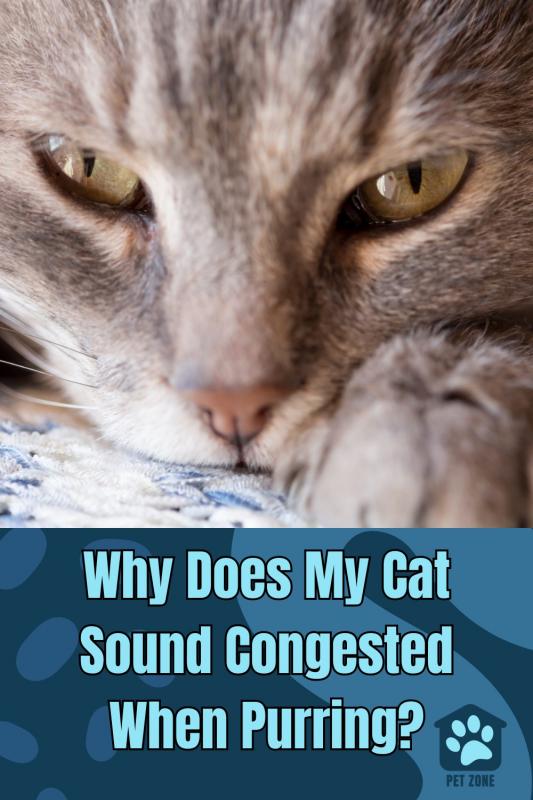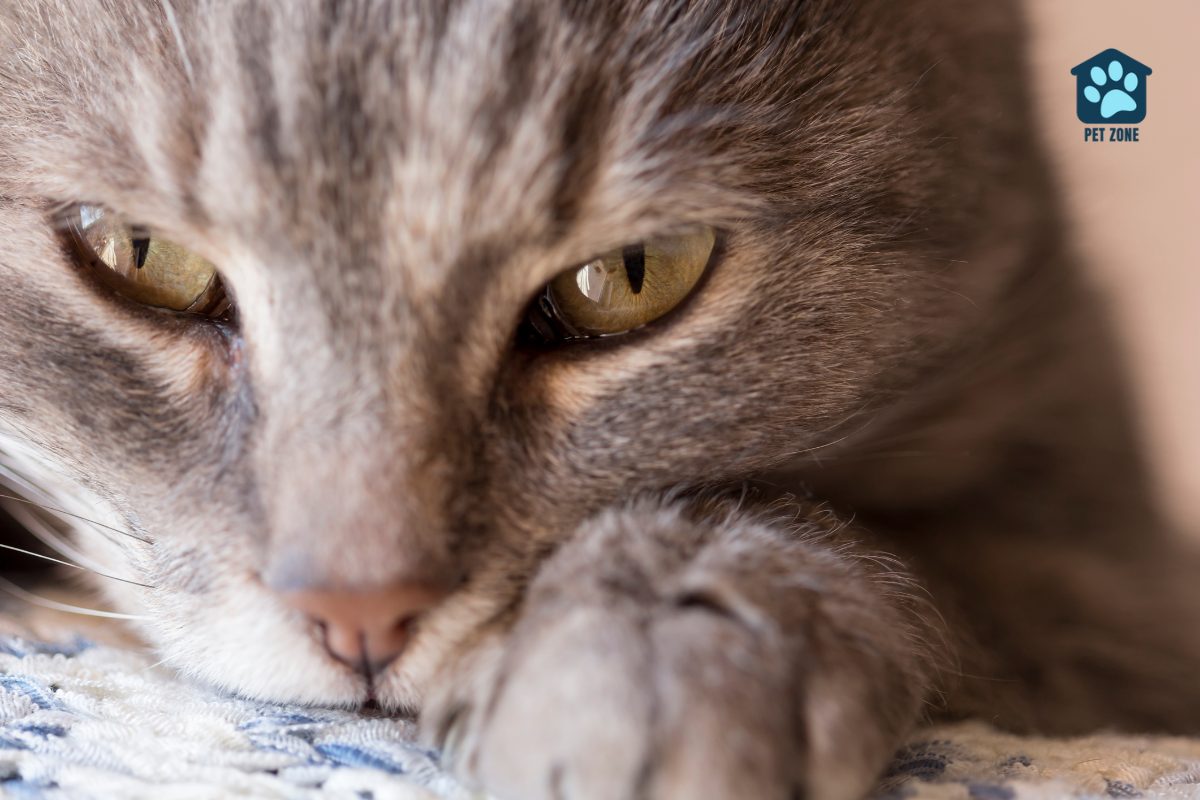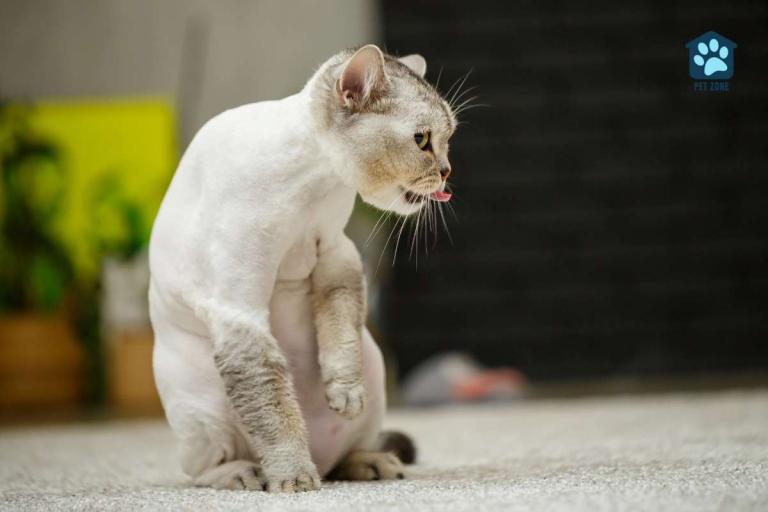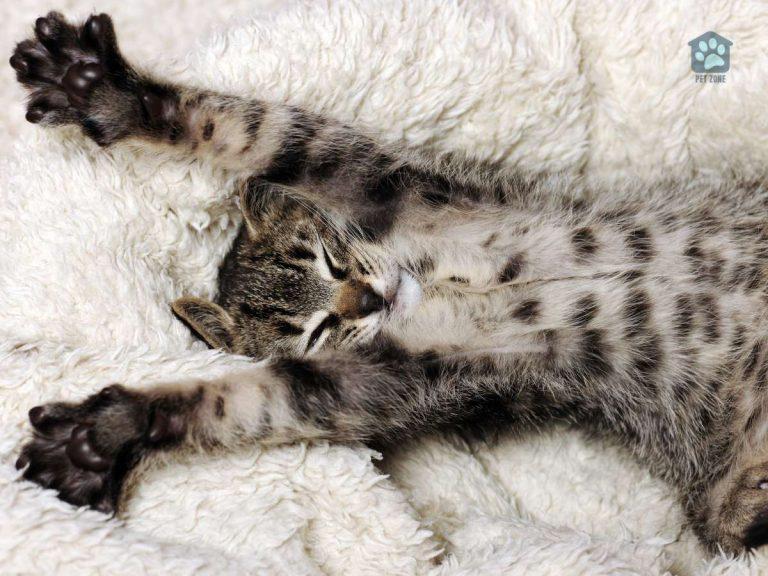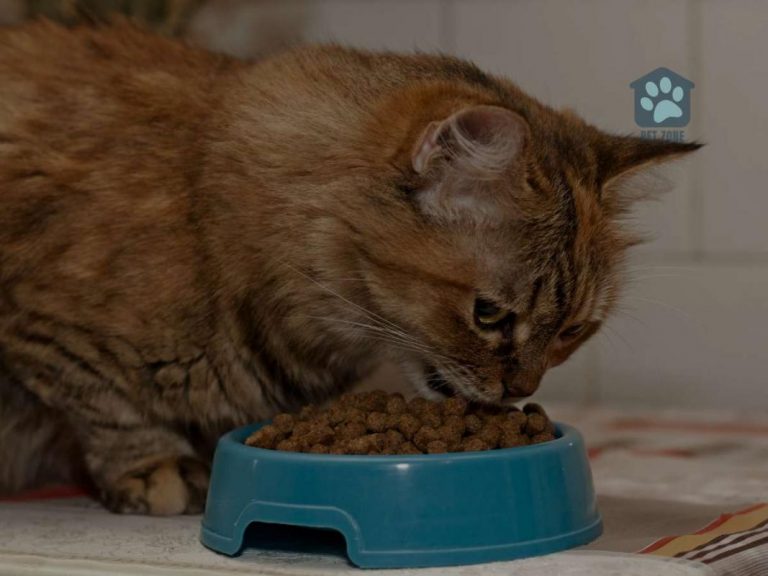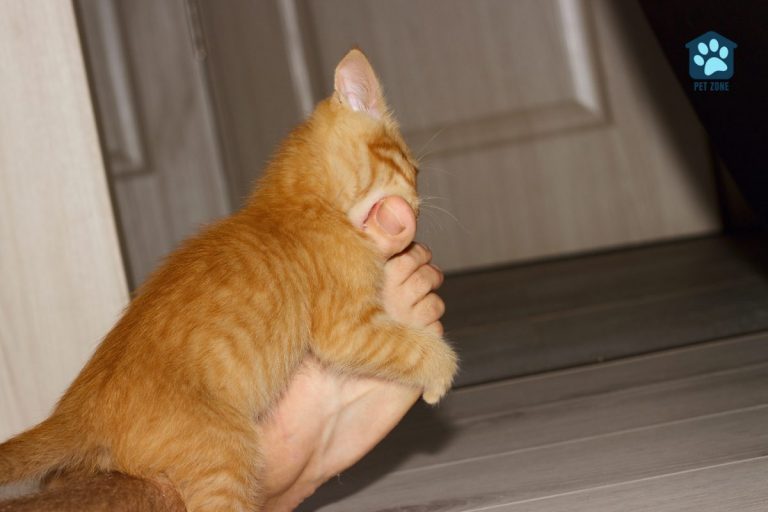Estimated reading time: 13 minutes
Have you ever heard your cat purr and thought it sounded a bit stuffy? That’s because sometimes cats can get congested just like people do. Just like humans, they might catch infections, face allergies, or have little growths called polyps that make their breathing sounds funny.
Sometimes they even get tiny things stuck in their noses! It’s not fun for them to feel this way. Knowing why your furry friend sounds different when they’re happy can help you take care of them better.
Kitties might show other signs too, like sneezing or runny eyes, and if these problems don’t go away, it’s important to check with the vet. At home, making sure the air isn’t dusty and using a humidifier may give some relief to your cat.
Your cuddly buddy’s health matters a lot – let’s see how we can help them breathe easy again!
Key Takeaways
- Your cat sounding congested when purring can mean they’re not feeling well. It could be a cold, allergies, or something stuck in their nose.
- If your cat is breathing fast, making wheezing sounds, or acting different, they might need help from the vet.
- Keep your home clean and use things like air purifiers to cut down on dust and allergens which can make your cat’s congestion worse.
- Help your kitty stay hydrated and eat right to fight off congestion. Wet food and fresh water are good for them.
- Take your furry friend for regular check-ups and shots to keep them from getting sick with things that can cause congestion.
Decoding Your Cat’s Purring: When Congestion Comes into Play
If you’ve ever wondered why your cat sounds congested when purring, it might be more than just a normal purr. Understanding the difference between typical and congested purring can help you recognize when your feline friend may need some extra care.
The Science of Purring
A cat’s purr is almost like a little engine inside them that can do amazing things. Their larynx creates a soothing sound ranging from 25 to 150 hertz, and they don’t even need their brain to tell them how to do it! This special rumbling has superpowers for both kitties and humans—it’s like a built-in stress reliever.
You might have noticed feeling calmer when your furry friend curls up on your lap and starts purring away. It’s not magic; those gentle vibrations actually help lower blood pressure and can make you feel less worried.
Plus, they’re good for healing. That means when kitty purrs, everyone in the room gets a dose of feel-good energy!
Typical Purring vs. Congested Purring
Understanding your purring pal often means tuning into their little motor’s hum. But when that purr sounds like it’s picked up a bit of a rattle, you might be wondering what’s going on in that feline engine of theirs. Let’s get into the nitty-gritty of typical purring versus its congested counterpart.
| Typical Purring | Congested Purring |
|---|---|
| Emits a smooth, continuous sound | Sounds raspy or crackly |
| Indicates contentment and self-soothing | May signal discomfort or pain |
| Occurs during relaxation and affectionate moments | Can happen any time and might indicate respiratory issues |
| Consistent volume and pitch | Volume and pitch may fluctuate due to breathing difficulties |
| Rhythmic and calming effect on humans | Causes concern and warrants closer observation |
| Associated with healing and pain relief in cats | Can be a symptom of underlying health conditions |
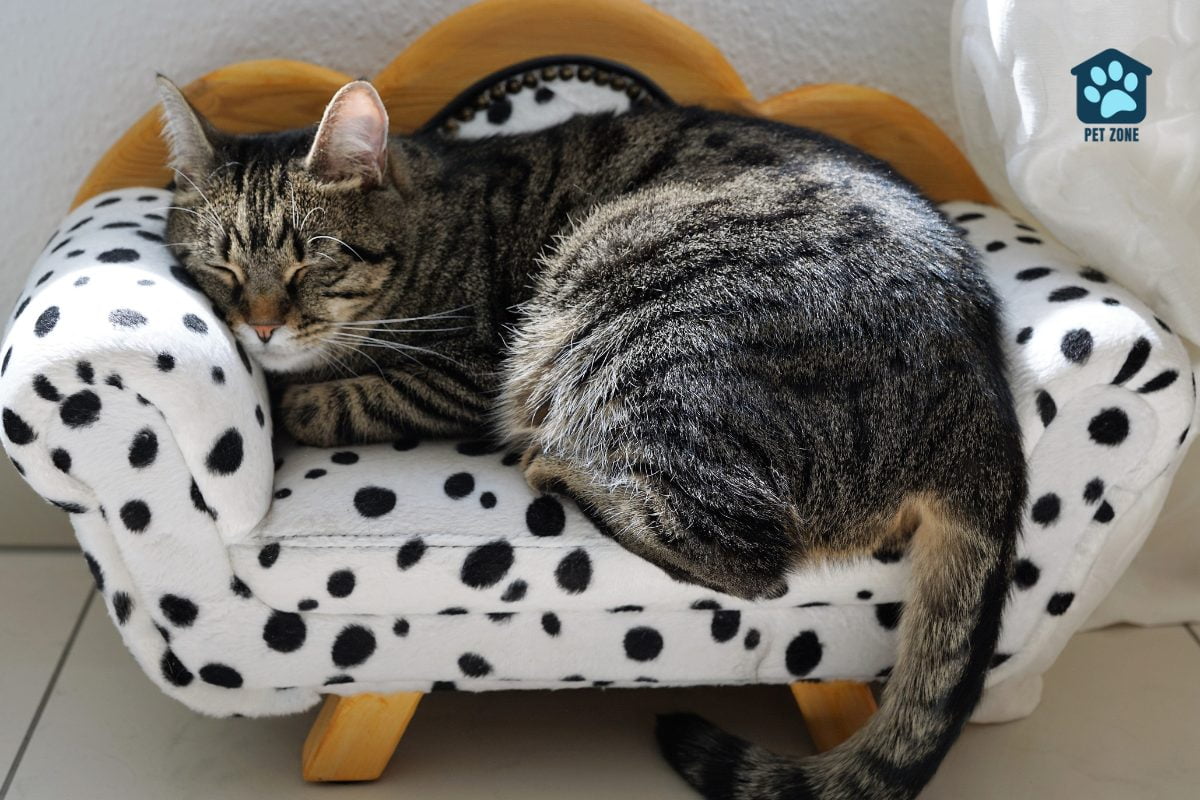
Common Reasons for Congested Purring in Cats
Upper Respiratory Infections
Upper respiratory infections in cats are like the common cold for us. Cats get runny noses, sneeze, and sound congested when they purr. These infections can be caused by a virus or bacteria and make your furry friend feel not so purr-fect.
Cats with stuffy noses might breathe loudly or even cough. You might notice them breathing faster than usual or their purring sounds more like snoring. If kitty’s airways get blocked, it can turn into noisy breathing that is hard to miss.
Feline asthma is another reason why your cat may sound congested. Feline asthma is a common respiratory condition in cats that can cause inflammation and constriction of the airways, leading to difficulty breathing and a chronic cough.
This can make the cat sound congested and in severe cases may require medication to manage the symptoms. If you suspect feline asthma, it’s important to take your cat to the vet for a proper diagnosis and treatment plan.
Keep an ear out for these changes because helping them starts with noticing something’s up!
Allergies and Environmental Irritants
Cats can be sensitive to allergens like pollen, dust, and certain foods. These can cause respiratory distress, leading to congested purring. You might notice symptoms such as sneezing, coughing, wheezing, and eye discharge in your feline friend if they have environmental allergies.
Likewise, irritants like smoke or perfume can also trigger respiratory issues in cats. This could result in congested purring as well as difficulty breathing.
If you suspect that your cat is struggling with allergies or reacting to environmental irritants, it’s important to create a dust-free environment for them. Using humidifiers and steam may help ease their discomfort from nasal congestion caused by these triggers.
Nasal Polyps or Tumors
Respiratory issues in cats can also arise from nasal polyps or tumors. Nasal polyps are benign fleshy growths that develop in the nasal passages and can obstruct your cat’s breathing, causing noisy breathing or purring.
These growths are commonly seen in young cats and may lead to symptoms such as sneezing, nasal congestion, and abnormal sounds during breathing or purring.
On the other hand, nasopharyngeal polyps originate from the middle ear and can extend into the external ear, leading to respiratory distress for your feline friend.
Foreign Objects in the Nasal Passage
Foreign objects like seeds or grass can get stuck in your cat’s nose, leading to inflammation and congestion. This can be very dangerous for your cat.
It’s important to seek immediate veterinary attention if you suspect that an object is lodged in your cat’s nasal passage, as fluid build-up from such a situation needs urgent medical care.
Recognizing Congestion in Your Feline Friend
Observing Changes in Breathing Patterns
When your cat is congested, pay attention to these signs:
- Look for rapid or labored breathing.
- Listen for wheezing or snoring sounds during breathing.
- Notice if your cat has noisy or heavy breathing.
- Watch if your cat breathes with its mouth open.
- Check for any coughing or gagging noises during breathing.
- Observe for bluish discoloration on the gums or tongue indicating a lack of oxygen.
- Note if your cat seems to struggle while breathing.
Listening for Unusual Purring Sounds
When listening to your cat, pay attention to any unusual sounds while they purr. If you notice raspy or congested noises during purring, it could indicate potential health issues in the nose and chest.
Signs like rapid breathing or loud purring should prompt a visit to the vet, as these may point towards respiratory distress. Additionally, recognizing other symptoms of distress alongside unusual purring sounds can help identify potential health concerns early on.
Identifying Additional Symptoms of Distress
If your cat is congested and purring, look out for these additional signs of distress:
- Keep an eye out for coughing, sneezing, or discharge from the eyes and nose.
- Watch for raspy breathing or noisy sounds coming from your cat’s lungs.
- Look for changes in your cat’s behavior or body language, which can indicate discomfort or distress.
- Monitor your cat’s overall energy levels and appetite; any significant changes could signal a health issue.
- Pay attention to how often your cat purrs and if the purring seems strained or forced.
- Be aware of any unusual vocalizations, as cats may meow differently when they are in distress.
When to Seek Veterinary Attention
Signs of Respiratory Distress
Is your cat showing signs of struggling to breathe? Look out for these indications of respiratory distress:
- Open mouth breathing, heaving abdomen, and fast, shallow breaths can signal difficulty in breathing.
- Unusual noises like wheezing, coughing, or loud breathing are signs that your cat may be experiencing respiratory distress.
- Observing a high breathing rate or other abnormalities in your cat’s breathing pattern could indicate respiratory distress.
- If your cat seems to be in distress while breathing and shows symptoms like lethargy or lack of appetite, it’s time to seek veterinary attention.
Persistent Congestion and Worsening Symptoms
Persistent congestion and worsening symptoms in your cat indicate a potential health concern. Here are some signs to watch out for:
- Nasal or eye discharge: If you notice an increase in nasal or eye discharge that is yellow or greenish in color, it may indicate a more serious infection.
- Noisy breathing: Persistent noisy breathing, wheezing, or rattling sounds while your cat is resting can be a sign of worsening congestion.
- Open-mouth breathing: Watch for open-mouth breathing, as this could indicate severe respiratory distress and the need for immediate veterinary attention.
- Decreased activity and appetite: If your cat becomes less active, shows no interest in eating, or seems lethargic, it could be due to worsening congestion and respiratory distress.
- High fever: A persistent high fever in your congested cat may suggest a more severe underlying infection that requires prompt medical evaluation.
- Coughing and difficulty breathing: Consistent coughing or struggling to breathe indicates that your cat’s congestion may be progressing and needs professional intervention.
The Importance of Preventative Care
If you notice your cat experiencing persistent congestion and worsening symptoms, it’s crucial to understand the importance of preventative care. Regular checkups and vaccinations play a vital role in maintaining your cat’s overall health.
Minimizing exposure to allergens and promptly addressing initial symptoms are key preventive measures. By staying proactive with regular veterinary visits and maintaining a healthy environment for your cat, you can help prevent potential health issues from developing or escalating.
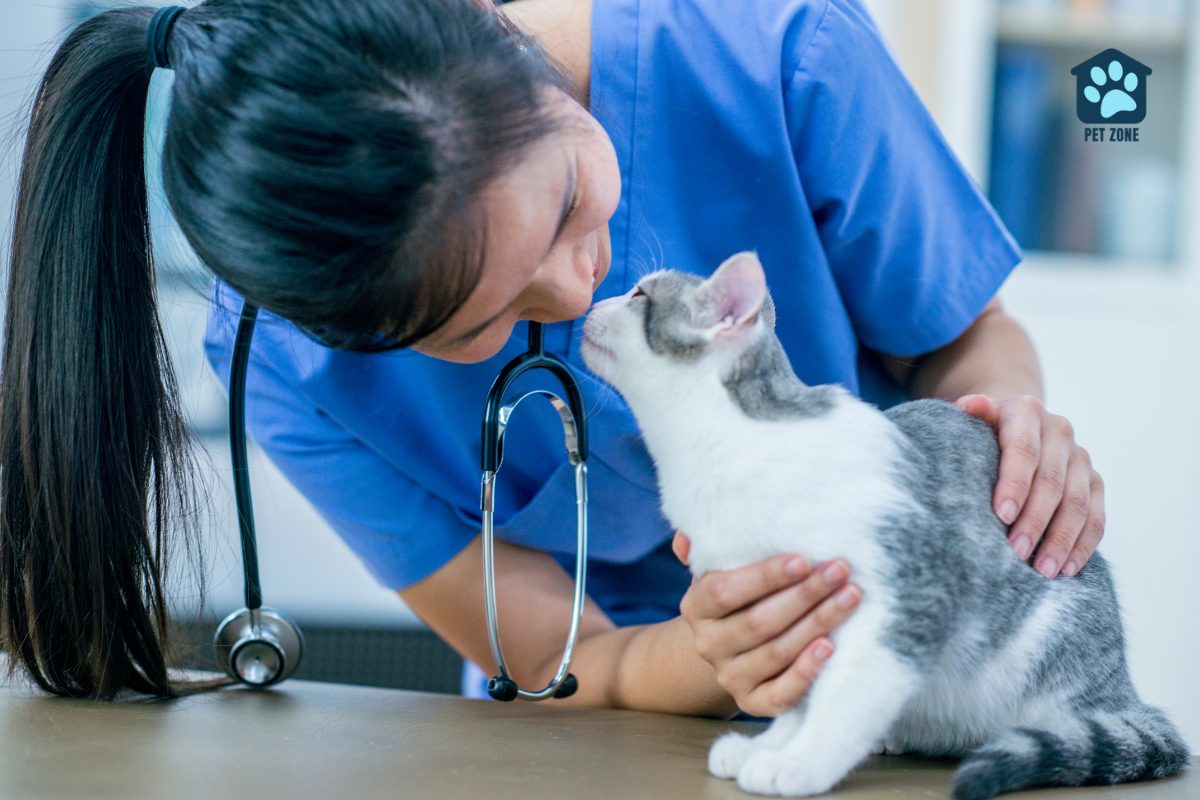
Home Care and Remedies for a Congested Cat
When caring for a congested cat at home, it’s important to ensure a dust-free environment and use humidifiers or steam to help clear nasal passages. Encouraging hydration and providing proper nutrition can also assist in alleviating congestion and discomfort for your feline friend.
Ensuring a Dust-Free Environment
Cats can be sensitive to dust, so it’s important to keep their environment clean. Here’s how to do it:
- Regularly clean your cat’s living space and remove dust by vacuuming and dusting.
- Use an air purifier to reduce airborne allergens, including dust particles.
- Wash your cat’s bedding and toys regularly in hot water to remove dust mites.
- Keep the litter box area clean and free from dust by scooping daily and using low – dust litter.
- Avoid smoking inside the house as cigarette smoke contains harmful particles that can settle as dust.
- Replace air filters in your HVAC system regularly to ensure good air quality for your feline friend.
Using Humidifiers and Steam
Humidifiers are safe for cats with congestion. They help to loosen mucus in the upper airways. Pediatric saline nasal drops can alleviate congestion when instilled into both nostrils 2-3 times per day.
Nebulizers are also helpful; they loosen mucus, making breathing easier for cats. Home remedies include using a humidifier, nebulizer, and pediatric saline nasal drops to ease congestion.
Encouraging Hydration and Proper Nutrition
Encouraging your cat to drink plenty of water and providing high-quality, balanced meals can help alleviate congestion and support their overall health. Here are some tips for encouraging hydration and proper nutrition:
- Offer fresh, clean water daily in a shallow bowl or a pet fountain to entice your cat to drink more.
- Consider adding wet food to their diet, as it contains higher moisture content than dry kibble and helps with hydration.
- Ensure that your cat’s diet includes essential nutrients such as vitamin C, E, and omega – 3 fatty acids, which can support their immune system and respiratory health.
- Monitor your cat’s eating habits and appetite closely, as changes may indicate underlying health issues that require veterinary attention.
- Consult with your veterinarian to determine the best diet and feeding schedule for your cat’s specific needs.
Understanding Laryngeal Disorders and Other Serious Conditions
Laryngeal infections and disorders, as well as bacterial and fungal infections, can also cause congestion in cats. To learn more about these serious conditions and how to recognize them, continue reading the full article.
Laryngeal Infections and Disorders
Cat laryngitis can happen when your feline friend gets an upper respiratory infection or breathes in dust or smoke. This means the voice box or larynx gets irritated, making it hard for your cat to meow normally.
Sometimes, infectious diseases like upper respiratory infections can lead to this problem. Also, unusual causes such as inflammatory laryngeal disease and granulomatous laryngitis might bring on various signs of upper airway trouble in cats.
Laryngeal paralysis is another issue where symptoms include weak and raspy meows; thankfully, treatments are there to help with this.
Inflammatory issues affecting the voice box or larynx in cats are called “laryngeal disorders.” These conditions change how the voice box works and its structure too. Upper respiratory infections often cause cat laryngitis.
Other times, inhalation of dust or smoke does it too. Infections like these can bring about inflammation in the voice box leading to changes in a cat’s normal sounds like their meow.
Bacterial and Fungal Infections as Culprits
When it comes to laryngeal infections and disorders, it’s essential to be vigilant about potential culprits such as bacterial and fungal infections in cats. These infections can lead to congestion which may manifest as unusual purring sounds or breathing difficulties in your feline friend.
It’s important for cat owners to stay informed about the signs of these infections, including nasal discharge, coughing, and wheezing. Upper respiratory infections in cats are often caused by different bacteria and fungi, requiring specific treatment plans.
In some cases, antibiotics may be prescribed by a veterinarian to address upper respiratory infections caused by bacterial pathogens that might be making your cat sound congested during purring.
Preventing Congestion in Cats
Regular checkups and vaccinations, minimizing exposure to allergens, and prompt treatment of initial symptoms are essential for preventing congestion in cats. To learn more about keeping your feline friend healthy and happy, read the full article!
Regular Checkups and Vaccinations
Ensure your feline friend’s health by having regular checkups and vaccinations. This will help prevent respiratory infections and keep them safe from contagious diseases like feline viral rhinotracheitis. Here are some important points to consider:
- Annual veterinary checkups and vaccinations are essential for maintaining your cat’s overall health and preventing respiratory issues.
- Feline viral rhinotracheitis is highly contagious, but vaccinations can provide protection against this serious infectious disease.
- Keeping your cat away from other sick cats can also reduce the risk of respiratory infections spreading.
- Feline upper respiratory infections may resemble a common cold, but they can be much more severe, highlighting the importance of regular veterinary care and vaccinations to prevent congestion in cats.
Minimizing Exposure to Allergens
Minimizing exposure to allergens is important for keeping your cat healthy. Here are some ways to achieve this:
- Keep your home clean and free of dust, mold, and pollen by regular cleaning and vacuuming.
- Use air purifiers to reduce airborne allergens inside your home.
- Avoid using strong perfumes or air fresheners that could irritate your cat’s respiratory system.
- Limit your cat’s contact with potential allergens such as smoke and certain foods.
- If possible, keep your cat away from other cats to reduce the risk of viral infections.
Prompt Treatment of Initial Symptoms
Minimizing exposure to allergens can help prevent congestion in your cat, but prompt treatment is also crucial. When your cat shows initial symptoms of congestion, taking quick action can make a big difference. Here’s what you can do:
- Administer antihistamines or corticosteroids as prescribed by your veterinarian to alleviate allergy – related symptoms causing congestion in your cat.
- Keep your home environment clean and free from potential allergens that could trigger respiratory distress for your feline friend.
- Monitor your cat closely and seek veterinary attention at the first signs of breathing abnormalities or unusual purring sounds.
- Use sterile saline to loosen thick mucus, making it easier for your cat to breathe and reducing congestion.
- Follow your vet’s recommendations for managing and preventing future incidents of congestion, especially if your cat has a history of respiratory issues.
- Stay informed about common allergens and irritants that could affect your cat’s breathing, ensuring proactive steps are taken to minimize their impact on your pet’s health.
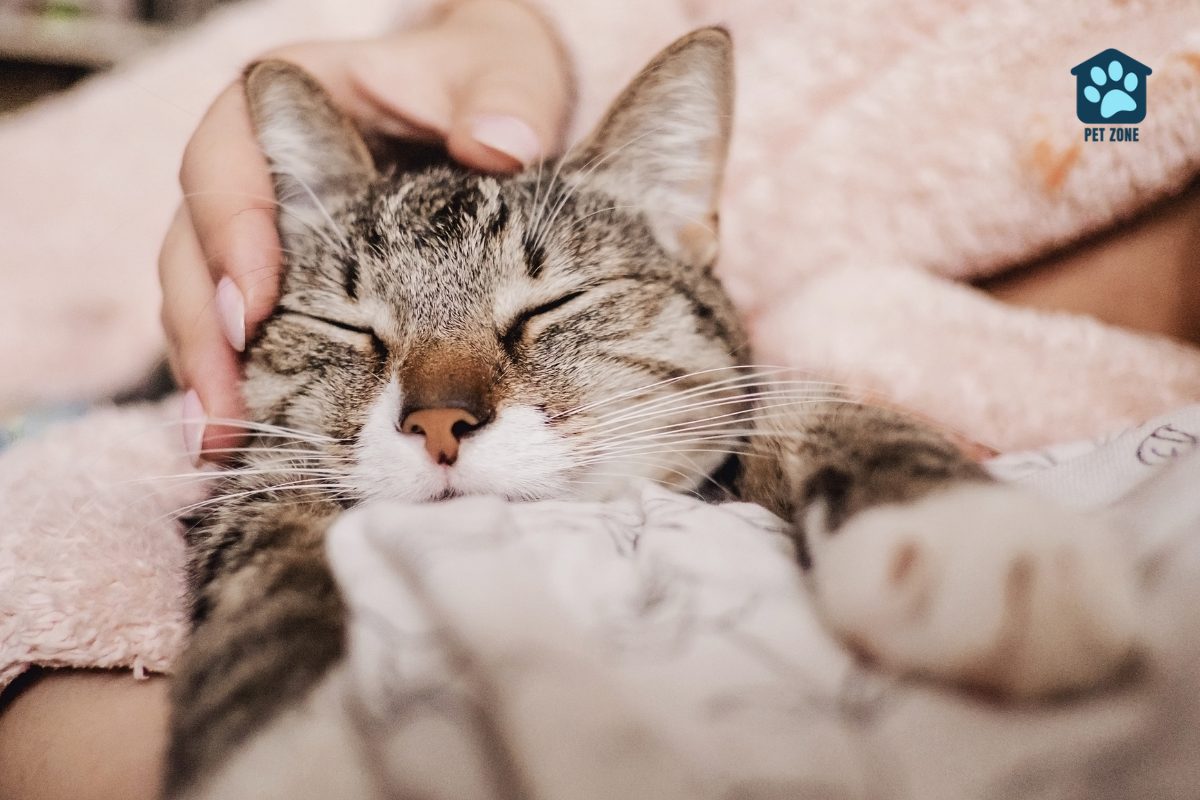
Conclusion
Understanding why a cat sounds congested when purring is crucial for their well-being. If you notice unusual purring sounds or changes in your cat’s breathing pattern, it’s essential to observe and take action promptly.
Maintaining a dust-free environment, ensuring proper hydration and nutrition, as well as seeking veterinary attention when needed are all vital steps in caring for your feline friend’s respiratory health. By being proactive and attentive to your cat’s signs of congestion, you can help keep them happy and healthy.
As an Amazon Associate I earn from qualifying purchases.
